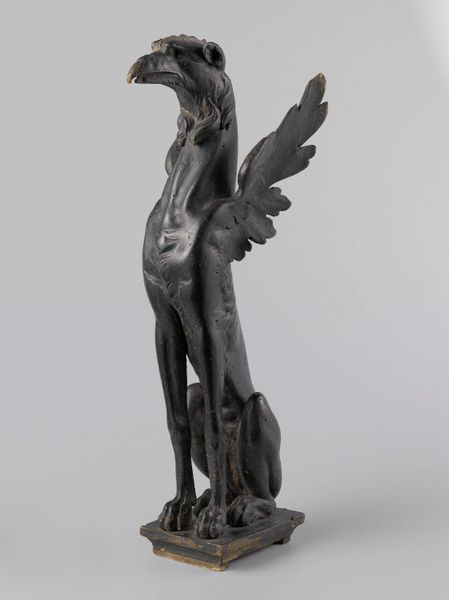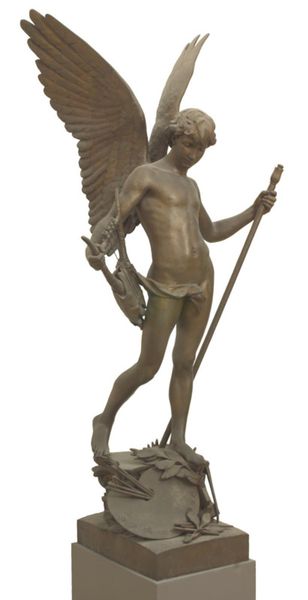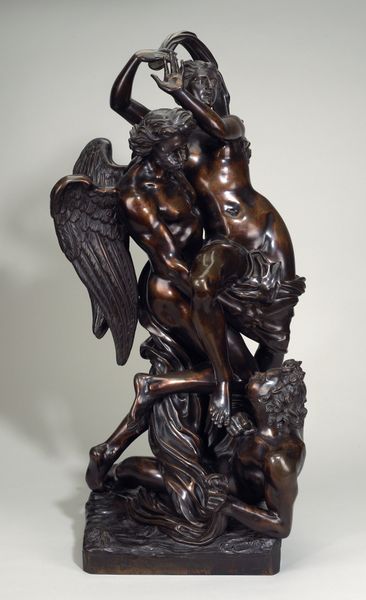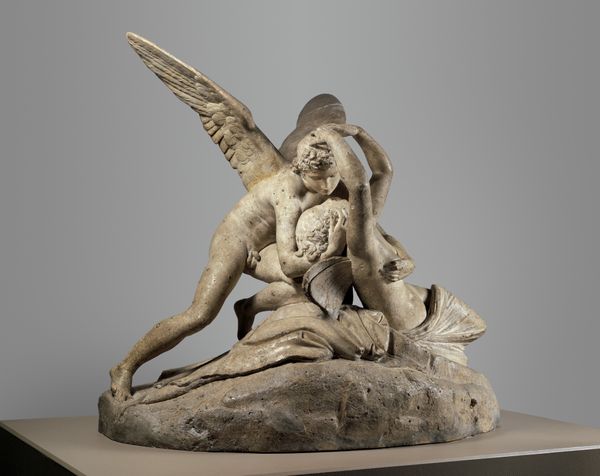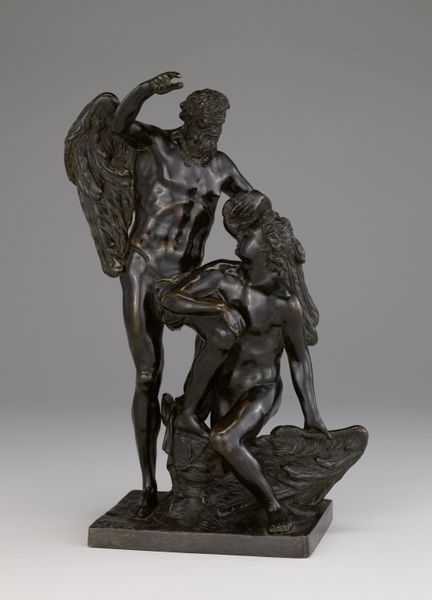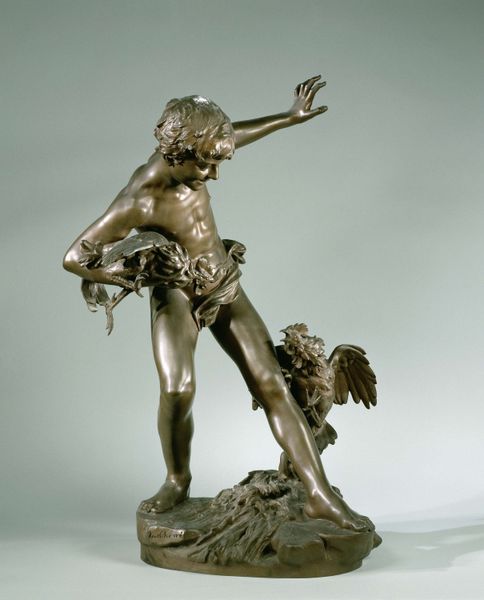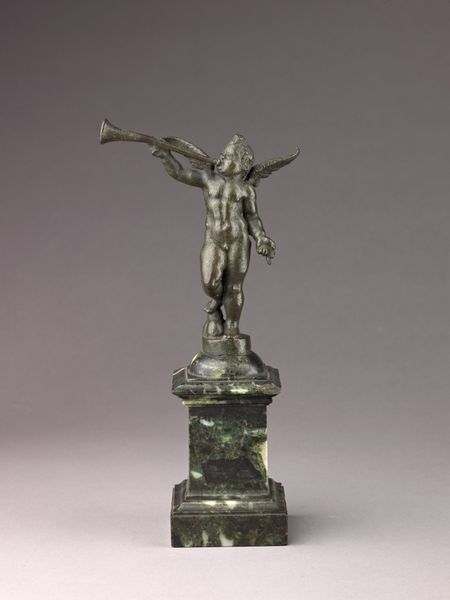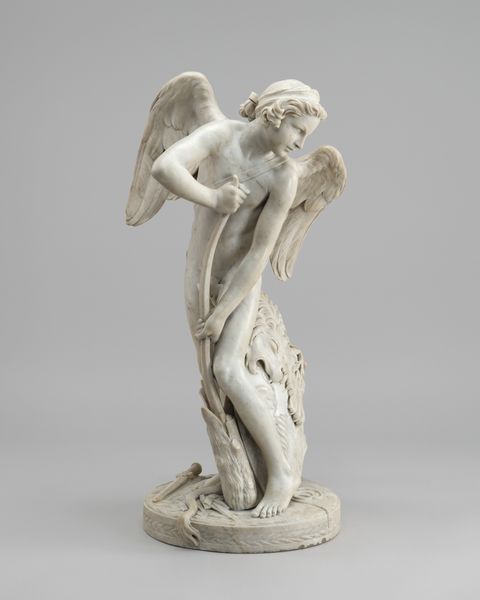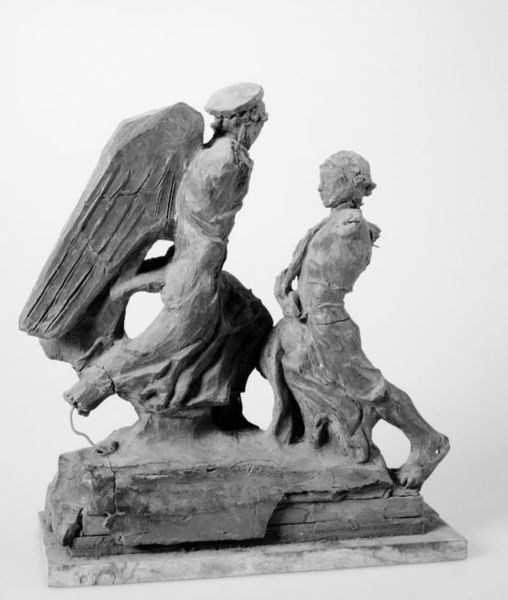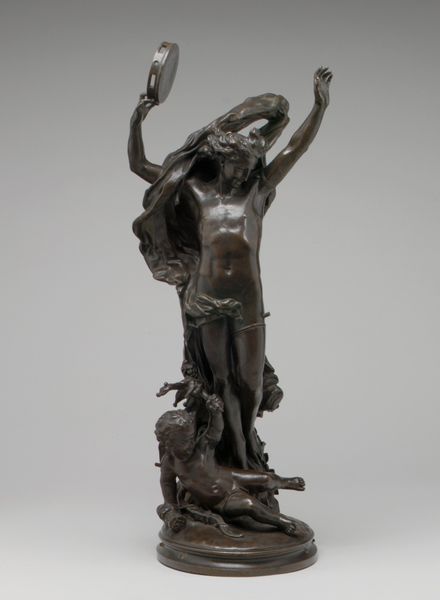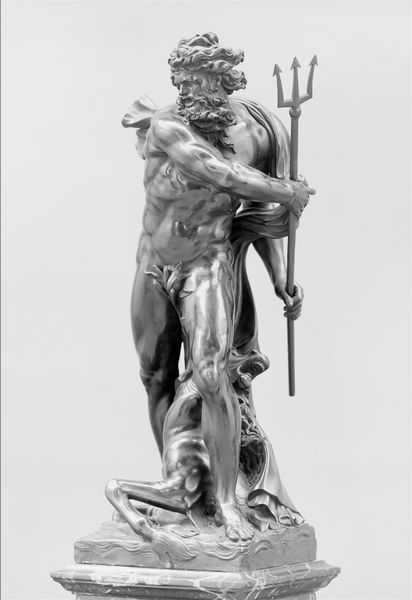
bronze, sculpture
#
portrait
#
neoclacissism
#
allegory
#
sculpture
#
bronze
#
figuration
#
sculpture
Dimensions: height 133 cm, width 98 cm, depth 53 cm, weight 222.5 kg, width 34 cm, depth 19 cm
Copyright: Rijks Museum: Open Domain
Curator: This bronze sculpture from 1781 is titled "Cupid stringing his bow" and was crafted by Francesco Righetti. Editor: It strikes me as remarkably restrained, doesn't it? The surface has a cool, almost somber quality that dampens the potentially saccharine subject. Curator: The smooth, uninterrupted planes of the bronze emphasize the Neoclassical pursuit of idealized form. Notice how Righetti simplified the musculature, aiming for purity of line. There's a deliberate removal of excess, wouldn’t you say? Editor: Absolutely, but the Cupid figure itself is so loaded. The bow is the instrument of desire, representing, of course, romantic love, but also the sharp sting of unfulfilled longing. I wonder, in a world moving towards rationalism, how was Cupid reframed, his arrow now pointing with Enlightenment precision. Curator: Precisely! By casting Cupid in bronze, Righetti lends permanence to an otherwise ephemeral concept, solidifying desire as a principle in line with the rational order that underpinned Neoclassicism. The pose too, still active yet elegantly frozen. The lines are precise. The contrapposto provides balance but doesn't interfere with the simple lines. Editor: And don’t forget Cupid’s wings! These have become a potent signifier not just of divinity, but freedom of the human imagination. The quiver at Cupid's side contains more arrows... and perhaps different varieties of love itself, both familial and eros, joy and heartache. They act to amplify, I believe. Curator: Agreed. Righetti brilliantly used the medium to elevate this allegory into an emblem of elevated feeling made durable. It makes for a curious kind of art object. Editor: A lasting vision in how love transforms our emotional reality.
Comments
rijksmuseum about 2 years ago
⋮
Francesco Righetti specialized in producing copies in bronze or lead of famous sculptures from classical Antiquity. The set of lead statues he made for Welgelegen near Haarlem between 1781 and 1801 – to which this Cupid belongs – are Righetti’s only surviving life-size reproductions.
Join the conversation
Join millions of artists and users on Artera today and experience the ultimate creative platform.
